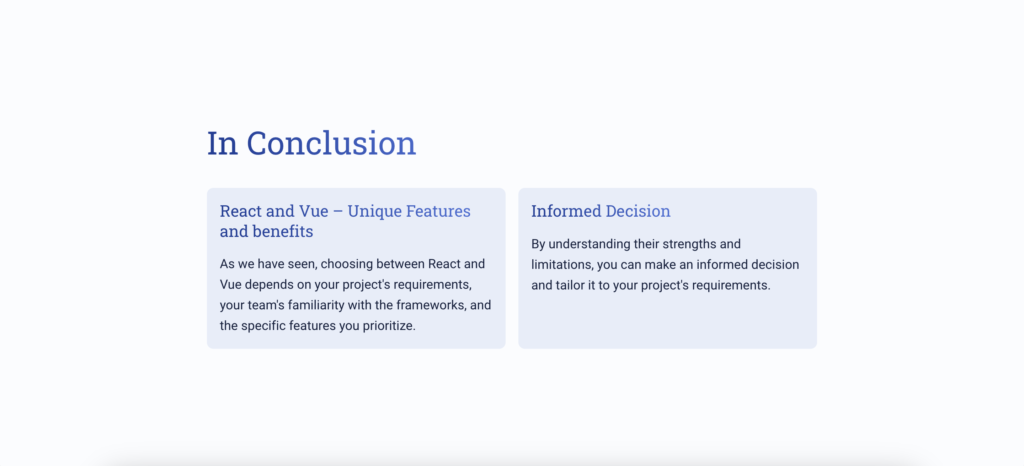Welcome to our in-depth exploration of a crucial decision in frontend development: React versus Vue. In this guide, we’ll thoroughly examine the strengths and features of both frameworks, equipping you to make an informed choice that aligns with your project’s requirements.
React, championed by Facebook, boasts an extensive user base and remarkable flexibility. Its component-based architecture simplifies the development of modular user interfaces, while the Virtual DOM ensures optimal performance by updating only the necessary components. React’s ecosystem includes valuable tools like Redux and React Native, offering solutions for state management and mobile app development.
On the other hand, Vue, a progressive framework, stands out with its gentle learning curve and straightforward design. Its adaptability allows for seamless integration into existing projects. Vue’s reactivity system and component-based approach parallel React’s, but its gradual adoption curve may be particularly appealing to newcomers.

To make the right decision for your project, you should consider factors like your project’s scope, your team’s familiarity with the frameworks, and the specific features you prioritize. This guide will provide a detailed comparison of React and Vue, covering aspects such as performance benchmarks, community support, and ecosystem. Real-world examples will showcase practical applications, enabling you to evaluate the pros and cons effectively.
Whether you lean towards React’s robustness or Vue’s user-friendly design, our exploration of both frameworks will empower you to make a confident choice. Let’s embark on this enlightening journey into the worlds of React and Vue!
React vs. Vue: A Comprehensive Comparison
Join us on a thorough exploration of frontend development as we compare and contrast ReactJS and VueJS. React shines with its unparalleled flexibility and a vibrant community, employing a component-based architecture and Virtual DOM for streamlined UI creation, while also offering extensions like Redux and React Native. Vue, on the other hand, prides itself on its simplicity, making it easy to integrate into projects of various sizes with its adaptable nature and gentle learning curve. Let’s delve deeper into their specifics, performance nuances, and ideal use cases to make an informed choice for your frontend journey.
React Explored: Crafting Dynamic Web Experiences
Let’s clarify a common misconception: ReactJS is not a JavaScript framework but a dynamic open-source JavaScript UI library introduced by Facebook in 2011. Its primary aim is to empower web applications with robust and engaging interfaces.
React’s emergence as a formidable contender in the frontend development landscape challenged established giants such as Angular 1, Backbone.js, and jQuery.
Statistical Insights: React’s Reach in Numbers
React’s dominance is evident on GitHub, where it has gained the support of a vast number of developers and garnered an impressive number of stars. This thriving community has led to the creation of numerous live websites, a testament to React’s widespread influence.
Surveys reveal that React.js holds the top position among developers’ preferences, capturing a significant percentage of votes and winning the hearts of many.
Diverse Frontend Horizons: The Applications of React
React.js transcends being a mere tool; it’s a comprehensive toolkit of possibilities. It’s suitable for a wide range of applications, from Single Page Applications that captivate users to dynamic media sites, video streaming platforms, and versatile SaaS solutions. React empowers developers to create engaging digital landscapes.
React’s Impact on Prominent Brands
Even giants like Facebook recognize the value of React, using thousands of React components to enhance their web app.
Walmart employs React.js to maintain platform consistency, introduce advanced web features, promote unit code testability, and enhance the user experience.
In the realm of video streaming, React plays a crucial role for Netflix, optimizing startup speed, runtime performance, and overall viewing experience.
Airbnb utilizes React.js to create an advanced cross-platform app, ensuring stellar performance across different operating systems.
Twitter integrates React to enhance its web app UI, resulting in a dynamic user experience, especially in features like the Tweet compose box and timeline/feed.
Other well-known brands like Grammarly, BBC News, Pinterest, Myntra, Uber, Lyft, and many more trust React.js to deliver exceptional user experiences.
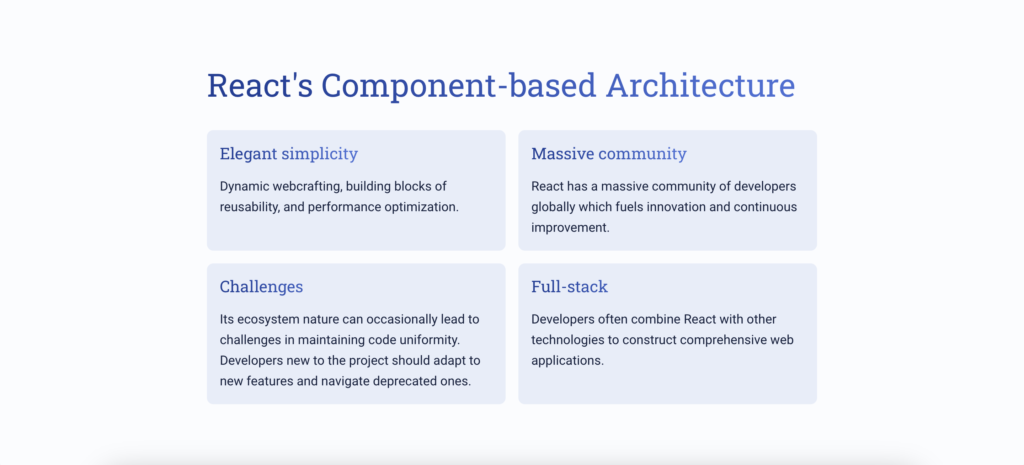
Strengths of React: A Closer Look
Elegant Simplicity: In a realm filled with frontend frameworks, React stands as a beacon of simplicity. Guided by a well-defined lifecycle and a component-based approach, React’s unique syntax, JSX, seamlessly blends JavaScript and HTML.
Dynamic Webcrafting: Through JSX, React opens the door to effortless rendering of code subcomponents. It masterfully weaves HTML strings and machine-readable code to construct dynamic web applications.
Building Blocks of Reusability: React’s foundation is built on the concept of components—each self-contained with logic and controls. These modular entities execute reusable HTML code, empowering developers to create and maintain web apps with ease. Nested components enable the construction of intricate applications.
Performance Perfected: Leveraging the power of the virtual DOM, React enhances web app performance. The virtual DOM, residing in memory, facilitates direct code updates, culminating in highly efficient applications.
A Global Alliance: With a colossal community of developers globally, React operates within an expansive network. This open-source spirit fuels innovation, continuous improvement, and mutual support among developers facing challenges.
Harmonizing with Search Engines: React’s SEO-friendly nature defies common stereotypes. Its server-side capabilities ensure the rendering of the Virtual DOM on browsers, making React pages as SEO-friendly as traditional web pages.
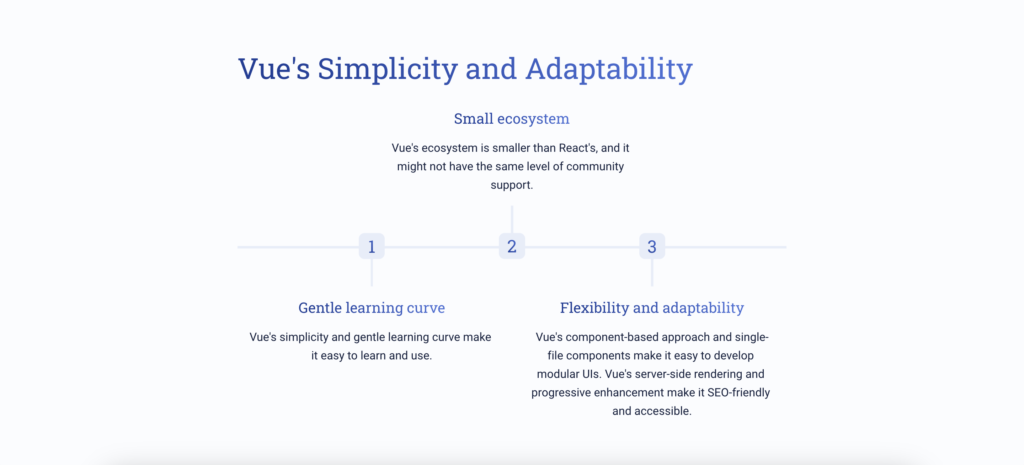
Boundaries Explored: React’s Limitations
Ecosystem Not Framework: React’s versatility comes with certain trade-offs. While it competes fiercely with frontend frameworks, its ecosystem nature can occasionally lead to challenges in maintaining code uniformity, especially for developers new to the project.
Navigating Syntax Complexity: React’s utilization of JSX introduces a unique blend of HTML and JavaScript in its code structure. While this can be advantageous, especially for experienced developers, newcomers might initially find the syntax daunting.
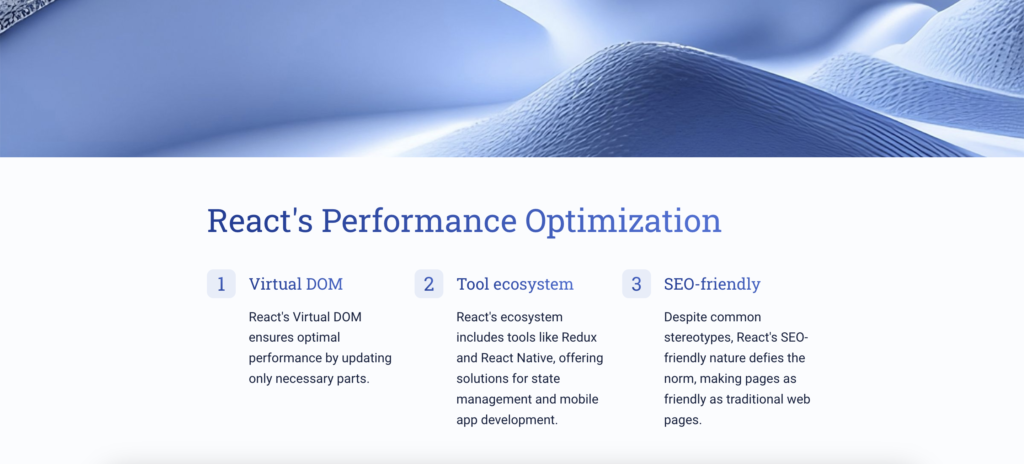
The Dance of Updates: React’s rapid evolution translates to frequent updates. Developers must remain engaged with the evolving landscape, adapting to new features and navigating deprecated ones.
Beyond the Visuals: React, as a UI library, centers on app UI layers. To embrace the full-stack paradigm, developers often combine React with other technologies to construct comprehensive web applications.
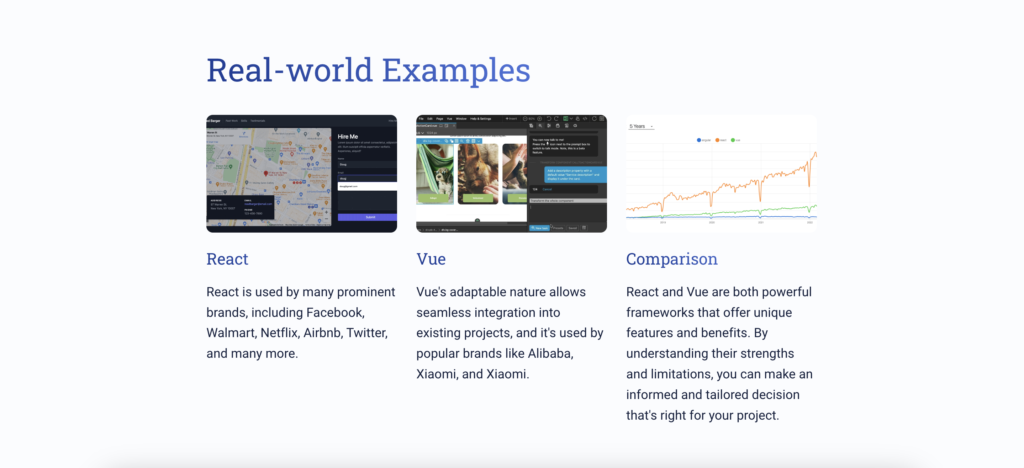
In the realm of web crafting, React.js reigns as a symphony conductor, orchestrating dynamic experiences with its components. It’s a tale of evolution, collaboration, and innovation, a saga that shapes the landscape of digital interactions. As React scripts its narrative, the world watches, captivated by its unwavering influence.
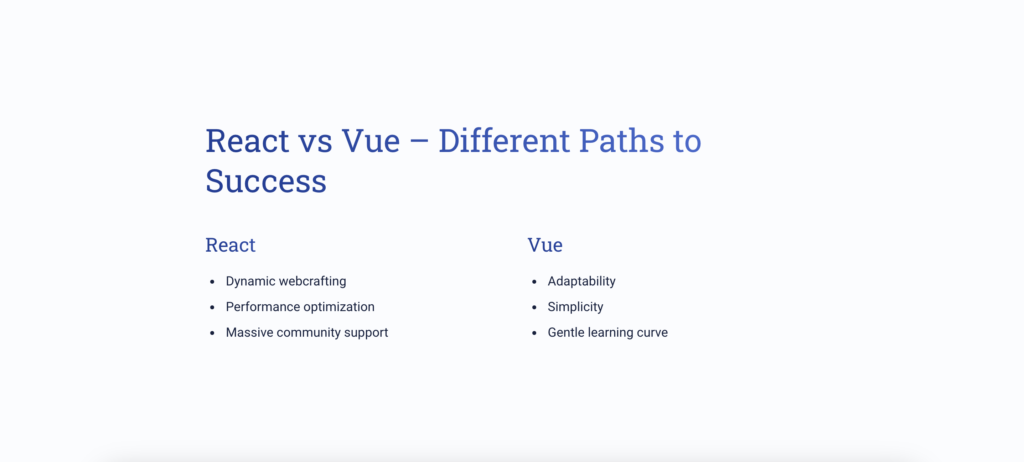
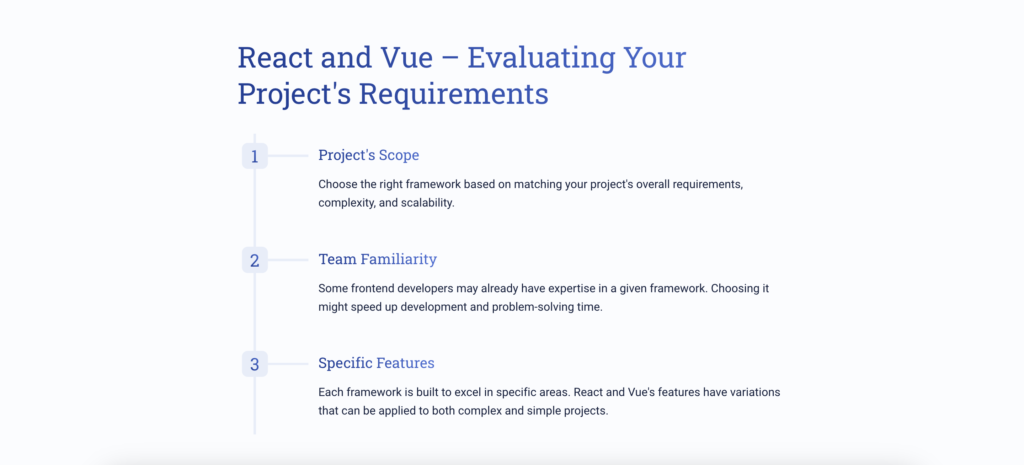
Having delved into the intricacies of React.js, let’s now turn our attention to Vue.js and explore it in greater detail!
